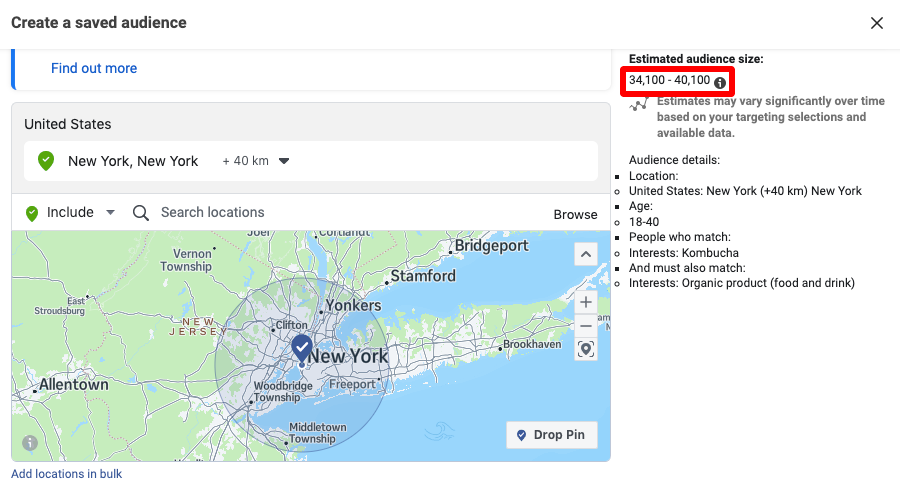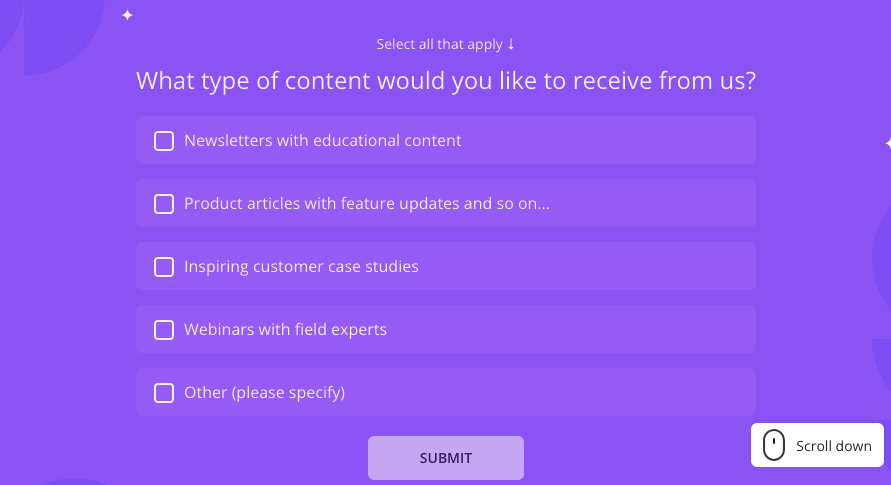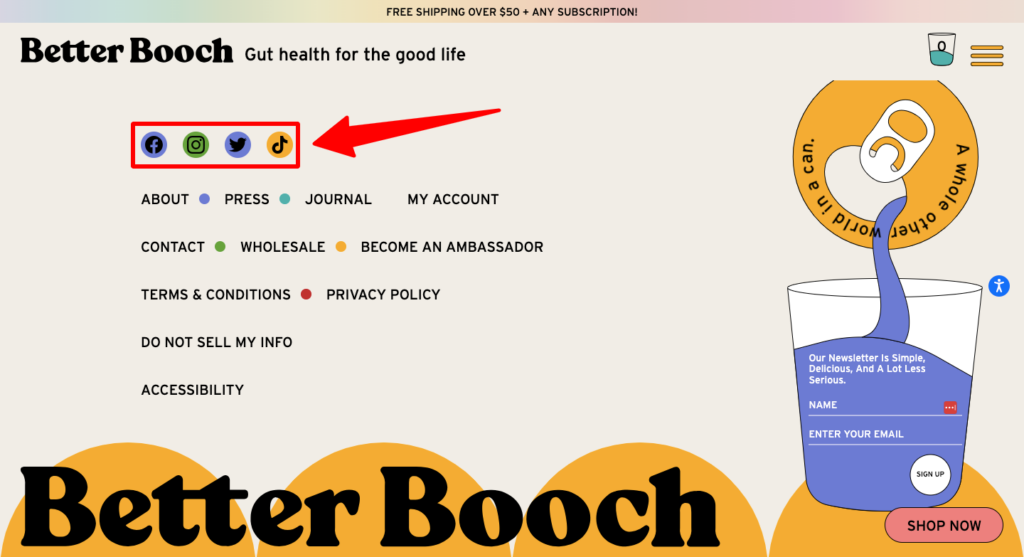You spend time planning and creating content for multiple social media platforms. The last thing you want is for all those posts to be seen by the wrong people — those with little or no interest in the product or service you sell.
This is a massive issue for many brands. When HubSpot asked social media marketers about their biggest challenges, “reaching our target audience” came in second place, only behind “creating engaging content.”
Sound familiar?
Read on for all the tactics, tips, and tools you need to find the right audience on social media.
1. Define Your Social Media Target Audience Demographics
The first step to reaching your target audience is to define who they are.
Have you already developed buyer personas for your business? Your work here is done — you can use them for your target audience on social media, too.
If not, you’ll need to profile them and determine what makes them tick. Start with the basic stuff: demographic information. Specifically, think about things like:
- Where they live
- What job they do
- How old they are
- How much they earn
- Their education level
You should get much of this from your social media analytics platform or from analyzing your existing customer base.
2. Consider the Total Size of Your Target Audience
Whether you’re just getting started on social media or already have tens of thousands of followers, it’s essential to understand the total size of your target audience.
That way, you know how many people you can reach who are actively interested in your product or service, which helps you gauge the success of your campaigns.
The simplest way to measure the size of your audience is to use Facebook Ads Manager.
Log in to your ad account, create a new saved audience, and add age, location, and interest-related filters to build the most accurate picture of the people you’re targeting on social media.
For instance, imagine you’re the social media manager at an organic kombucha brand that predominantly sells to Gen Z and Millennial customers in New York. We’d add the following filters:
- Location: New York
- Age: 18 – 40
- Interests: Kombucha AND organic products
Facebook then takes over, using its wealth of data to estimate how many of its users are interested in your product:

If the total audience you’re currently targeting is smaller than you expected, this might be the time to consider expanding your offering to address new audiences. Maybe you could launch a new product, or perhaps you simply have to adjust your messaging to promote your brand slightly differently.
Alternatively, you might find your audience is far larger than anticipated — in which case it might be worth investing more in your social media marketing to capitalize on the opportunity.
3. Understand Interests and Pain Points
Now you know the basics of your audience — who they are and how many exist.
Next, let’s put some meat on the bones of that information by considering their pain points: What keeps them up at night? And what can you do to make their life that little bit easier?
Speak to your accounts, sales, or customer support teams here. They’ll understand better than anyone why people choose your product or service. You’ll also want to consider their broader interests — because they don’t spend every waking moment thinking about your brand. Knowing their interests will help you craft more engaging social media content.
Google Analytics can be an unlikely ally here. Click through to the Demographics and Interests tabs, and you’ll find a bunch of (estimated) information about the types of people who visit your website, which is presumably at least somewhat aligned with the audiences you’re trying to reach on social media.
For instance, this brand’s Google Analytics shows that a decent chunk of its audience works in or is interested in technology. So we might try discussing some tech-related topics on social.

Remember that if you sell more than one product or service or serve customers in different locations, you likely have more than one target audience. Try to pick out your 2 – 3 most important audience segments, profile each, and then prioritize them in your content planning.
For instance, if one group makes up 50% of your business, half your social content should be aimed at them.
4. Know Which Social Media Platforms They Use
An obvious but important point: you need to focus your social media marketing efforts on the platforms your target audience is most likely to use.
Again, Google Analytics (or whatever web analytics tool you use) can help you here, showing you which social networks are bringing visitors to your site.
Of course, this doesn’t tell you the whole story.
If LinkedIn is your top social traffic source, that could be because it’s the most popular social channel among your audience. Or maybe you’ve been putting way more effort (and money) into LinkedIn than any other channel. Maybe you’d generate more traffic if you switched focus to Instagram and TikTok.
That’s why you shouldn’t entirely rely on historical data to inform future decision-making.
Use a little educated guesswork, too. If your demographic analysis revealed that your target audience skews female and Millennial, there’s a decent chance they use Pinterest — and they probably love Instagram Reels.
5. Speak To Your Existing Customers
We’ve looked at various ways to use data (and your intuition) to hone in on your social media target audience.
At this point, it’s worth stopping to sense-check your findings by surveying your existing customers.
Their insights will be invaluable in figuring out how to reach more people like them, making this a crucial step in the research process — unless you’re planning to ditch your current audience and chase a different customer segment going forward.
If you’ve got a reasonably sized email list, survey your subscribers about the platforms they use and the content they engage with.

If not, consider embedding a survey on your website or promoting it via on-site popups or chatbots.
6. Study the Competition
As with so much in the marketing world, you can save a bunch of time on defining and locating your target audience by analyzing what your competitors are doing.
Hopefully, you’ve got a decent idea of who your competitors are.
If not, it’s no big deal: you can find out by simply Googling the main product or service you sell and seeing which brands appear in the search results. For instance, it’s a fair bet that Better Booch Kombucha is one of the biggest rivals of our imaginary organic kombucha brand.

View this post on Instagram
Repeat this process for 3 – 5 of your top competitors.
Of course, we’re not suggesting you replicate their entire social media strategy — you’ve got your own value proposition and unique selling points.
But it always helps to better understand how other businesses in your space find, reach, and engage their target audiences.
👉 Read more: How to Run a Social Media Competitive Analysis
7. Use Social Media Listening To Identify Industry Trends
Having dug into your analytics tools, spoken to your existing customers, and researched your competition, you should know the topics your audience is most likely to talk about.
Now, it’s time to gather even more data through social listening.
Social listening is about looking at relevant online conversations and trends. Some will specifically be about your brand — like people “@-ing” you on social media to ask a question, praise your product or service, or report an issue — but most will be far broader.
Given the amount of noise on social media, you’ll almost certainly need to invest in a social media listening tool to do the hard yards for you.

With the right toolkit in place, you can analyze what people are talking about in your industry, such as:
- Common problems that your potential customers are facing
- Trending conversations that you can get involved in
- Disruptive events, like new laws, products, or competitors
Tapping into these broad, industry-level themes will help you create content that resonates with people in your target audience (even if they’ve never heard of you) and join the right social media conversations.
👉 Read more: Best Practices for Using Social Media Listening to Improve Your Marketing Strategy
8. Bring It All Together in Your Content Strategy
By this point, you should have a clear understanding of:
- What your target audience looks like (in terms of demographics, size, and interests)
- Which social media platforms they use
- What topics they’re most likely to engage with
That’s pretty much everything you need to pack your social media content calendar with the types of posts your existing (and future) customers will love.
Focus on the right topics and join the right conversations, and your target audience will come to you.
Want to know how top brands find and engage their audiences on social media? Sign up for one of our upcoming social media conferences.
Featured image by Pixabay.









